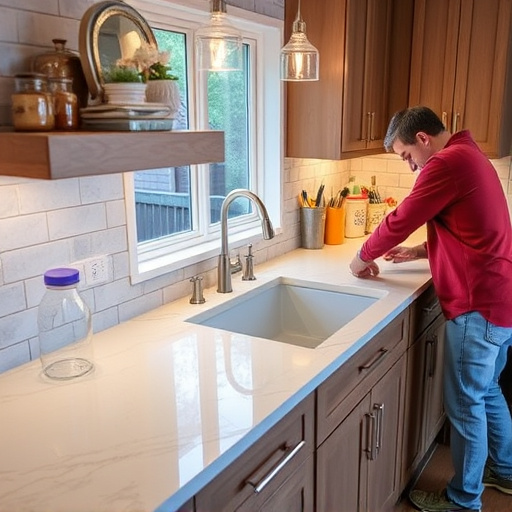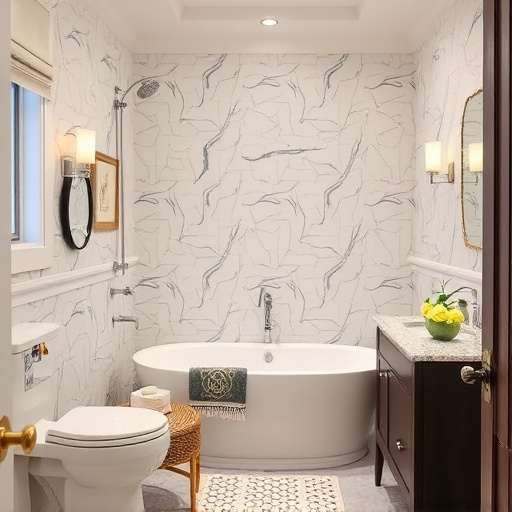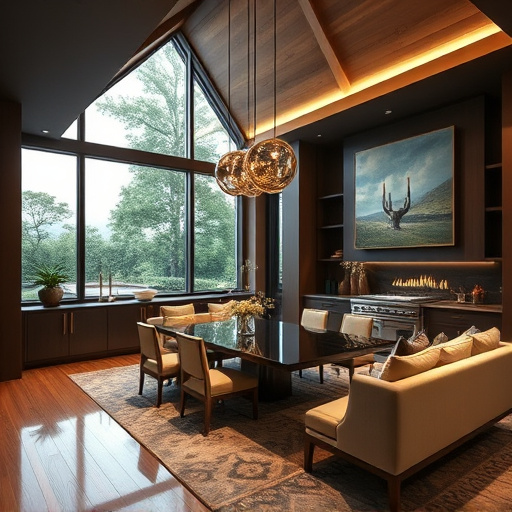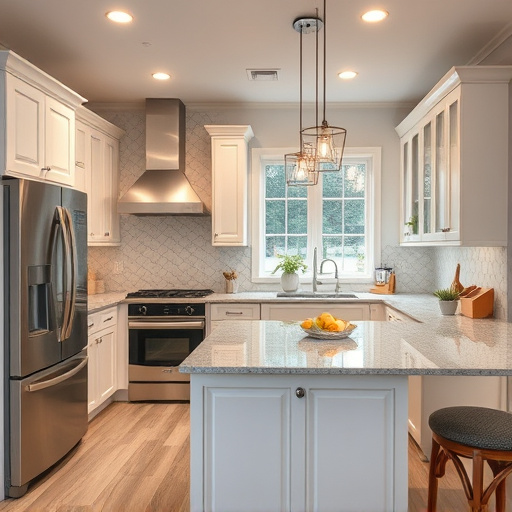Commercial design is vital for successful office space transformations, catering to specific business needs like role requirements and company culture. Skilled designers balance budgets and schedules with innovative solutions, maximizing space efficiency while enhancing aesthetics and functionality. Strategic design approaches, focusing on employee well-being, lead to improved productivity and collaboration, optimizing outdated spaces for modern business requirements.
In today’s dynamic work environment, optimizing office space is crucial for enhancing productivity and fostering collaboration. This article explores the power of strategic commercial design in transforming workspace. We delve into understanding unique office space needs and constraints, guided by fundamental principles of commercial design. Subsequently, we offer a step-by-step approach to implementation, ensuring efficient solutions tailored to specific business goals. Discover how expert commercial design can revolutionize your office, creating an environment that drives success.
- Understanding Office Space Needs and Constraints
- Principles of Commercial Design for Optimization
- Implementing Solutions: A Strategic Approach
Understanding Office Space Needs and Constraints
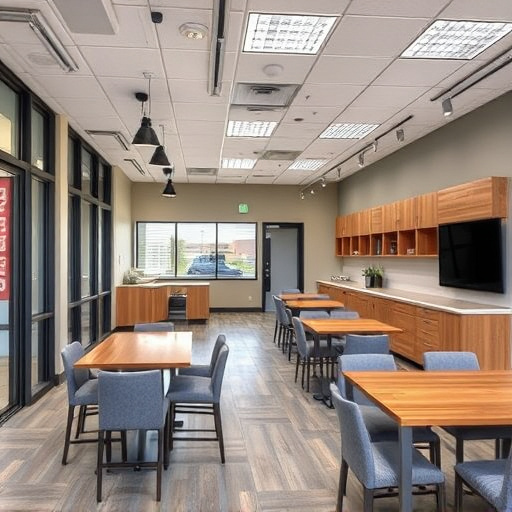
Understanding the unique needs and constraints of an office space is the foundation for any successful commercial design project. Before breaking ground on a commercial design overhaul, it’s essential to consider various factors that will shape the layout and functionality of the workspace. This includes assessing the size and layout of the physical space, identifying the number of employees and their specific roles, and understanding the company’s culture and work preferences. For instance, a tech startup may require open-plan areas for collaboration, while a legal firm might demand private offices and quiet meeting rooms.
Moreover, home transformations or home remodeling projects often face distinct challenges. Limited budgets, tight schedules, and the need to balance employee productivity with a comfortable work environment are common constraints. Skilled commercial designers can navigate these hurdles by implementing innovative solutions, utilizing space efficiently, and incorporating aesthetically pleasing designs that cater to both functionality and employee satisfaction. This strategic approach ensures that the final product not only meets but exceeds expectations for a productive and inspiring office space.
Principles of Commercial Design for Optimization
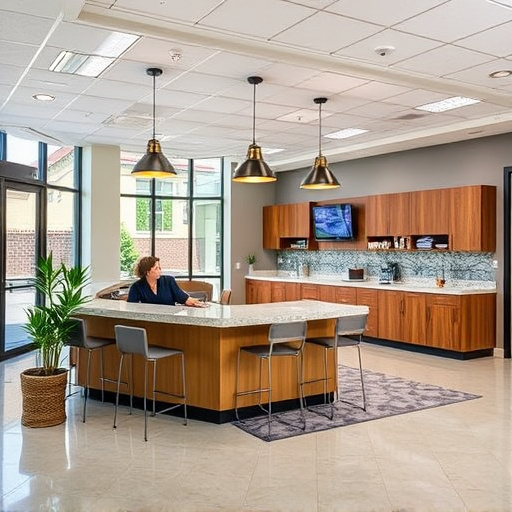
In the realm of office space optimization, commercial design serves as a powerful tool to transform and enhance work environments. The principles of commercial design for optimization focus on creating functional, aesthetically pleasing, and flexible spaces that cater to the diverse needs of modern businesses. One key aspect is understanding the flow of movement within the office, ensuring efficient navigation for employees while promoting collaboration and communication. Well-designed commercial spaces incorporate natural lighting and vibrant colors to create a positive atmosphere, boosting productivity and employee satisfaction.
Moreover, integrating technology seamlessly into the design process is essential. Smart office solutions such as automated lighting systems, customizable furniture, and advanced audio-visual equipment enable dynamic workspaces that adapt to changing business requirements. These principles of commercial design go beyond aesthetics; they prioritize ergonomic layouts, accessible amenities, and adaptable spaces, ultimately contributing to improved employee well-being and overall productivity. Incorporating these strategies through professional home improvement services or renovation projects, including even a simple bathroom remodel, can significantly transform an office into a vibrant, efficient, and inspiring workplace.
Implementing Solutions: A Strategic Approach
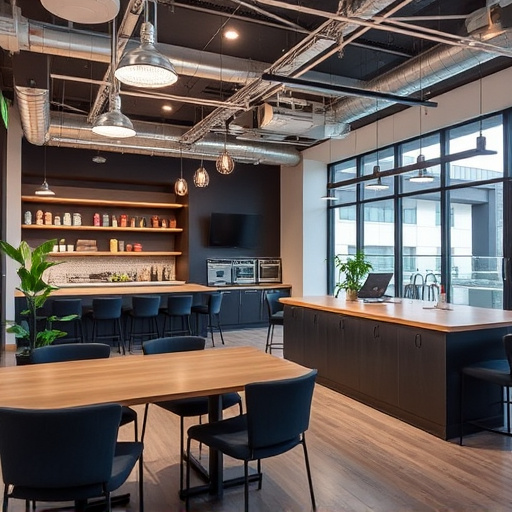
Implementing Solutions: A Strategic Approach to Commercial Design
When optimizing office space, a strategic commercial design approach is paramount. This involves careful consideration of existing infrastructure and workflows to identify areas for improvement. Customized work stations, innovative floor replacements, and even exterior painting can transform dull, outdated spaces into dynamic environments that foster productivity and collaboration.
By integrating these solutions, businesses can create customized layouts tailored to their unique needs. Strategic design also promotes efficient use of space, ensuring every square foot contributes to the overall functionality and aesthetics of the office. This not only enhances employee satisfaction but also communicates a commitment to innovation and growth within the organization.
Optimizing office space through strategic commercial design is a multifaceted process that requires understanding organizational needs, applying sound design principles, and implementing tailored solutions. By integrating these strategies, businesses can transform their work environments into productive, collaborative, and visually appealing spaces that enhance employee satisfaction and foster growth. Commercial design plays a pivotal role in maximizing every square meter, ensuring offices meet the evolving demands of modern work while remaining both functional and aesthetically pleasing.








